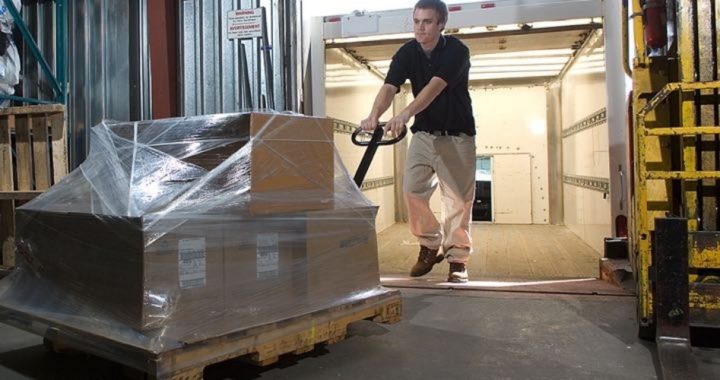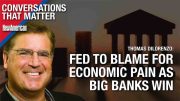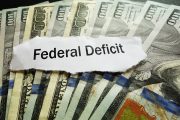
Two more reports taking the temperature of the U.S. economy were released on Thursday, providing more evidence that it continues to expand, setting records along the way. First from the Department of Labor (DOL) came the report that new claims for unemployment insurance — considered a precursor for future layoffs — dropped in August “to the lowest level for initial claims since December 6, 1969.” That’s the lowest level in nearly 50 years!
Next came ADP’s jobs report for August: 163,000 new jobs were created by the U.S. economy last month, slightly below forecasters’ expectations (a first!), but indicative of a robust and growing economy nevertheless. Said Ahu Yildirmaz, an ADP vice president: “Although we saw a small slowdown in job growth the market remains incredibly dynamic. Midsized businesses continue to be the engine of growth, adding nearly 70 percent of all jobs this month, and remain resilient in the current economic climate.”
Small businesses (with fewer than 50 employees) added 21,000 jobs last month while medium-sized businesses (with 50 to 499 employees) added 111,000 new workers. Large employers (500 or more employees) added 31,000 new employees. Lost in the headlines, however, were the nearly 21,000 new jobs created by the “franchise” sector of the economy: restaurant chains and auto parts franchises and auto dealers, reflecting growth there as well.
What surprises the “experts” is how the economy can continue to hire new workers when there appear to be so few of them seeking work who have the skills needed. This past spring the Labor Department reported that there were more job openings than the number of unemployed people actively looking for work.
As The New American reported on Tuesday, Ivanka Trump, the president’s first daughter, thinks that jobs training programs funded by the federal government with taxpayer monies is the answer. But as reported, “private industry is finding that by replacing humans with machines, more jobs are being created rather than fewer.”
But what about those seeking work without the requisite skills? Ask those workers moving to Florida to take advantage of the ABC Institute, funded by the East Coast Chapter of Associated Builders and Contractors. As noted by The New American:
Once an applicant is matched with a full-time job, the employer sends the candidate to the ABC Institute for classes and training. They usually run one or two nights a week for two to four hours each, attended by apprentices after they are done with their regular work day.
Those candidates work full-time from the start, and are paid for a 40-hour week. First-year electricians, for example, start at $15 an hour and enjoy $2-$3 hourly raises until they graduate at $25 an hour. If a graduate moves on to get his journeyman’s license, he gets another raise to $29 an hour, or about $4,000 a month.
This explains why south Florida is considered a “worker’s market”: An applicant without skills can move from zero to $15 an hour his first day on the job, and within a few years be making $25 to $30 an hour. In fact, in Miami, plumbers, electricians, brick masons, and carpenters earn far above the local median income: $55,000 to $75,000 a year, with full benefits and a pension, and without the need for a college degree.
The Conference Board has also been busy taking the economy’s temperature. In a 2017 survey, it discovered that the highest percentage of workers polled since 2005 said they were satisfied with their jobs. And that data doesn’t reflect the fact that the Trump economy really started taking off in the second quarter of this year. The Conference Board also reported that consumer confidence in August was the highest level seen in nearly 18 years, along with improved expectations for the future.
What will continue to drive the economy to new levels of performance? Certainly, tax cuts, both individual and corporate, have something to do with it. And the Trump administration’s policy of deregulating the economy is giving it more room to breathe. And then there’s the “repatriation” of billions from overseas, taking advantage of the “tax holiday” where those foreign profits are taxed at only 15.5 percent instead of 21 percent (or, previously, 39 percent).
But precious little has been said about the coming wave of prosperity unleashed as Trump’s tariffs strategy begins to reduce tariffs across the world. Simply put, a tariff is a tax, and when it is reduced on a particular product, be it BMWs, eggs, or cottage cheese, demand increases, driving the economy ever higher.
All of this, along with the increasing use of robots to eliminate menial tasks done by humans, and machines using “superior intelligence” soon to drive long-haul trucks and fly cargo planes, will free up those humans to do ever-more productive work, adding incrementally and predictably to the economy’s output.
Expect still more records to be set as the U.S. economy continues its remarkable expansion.
Photo: Clipart.com
An Ivy League graduate and former investment advisor, Bob is a regular contributor to The New American magazine and blogs frequently at LightFromTheRight.com, primarily on economics and politics. He can be reached at [email protected].
Related articles:
Economy Booming: Could We See Trump’s Claimed 5% GDP Growth?
Ivanka Trump’s Role as “Jobs Czar” Challenged by Robotics, AI, and Private Industry
White House Forecasts 3.5 Percent GDP Growth in Third Quarter



